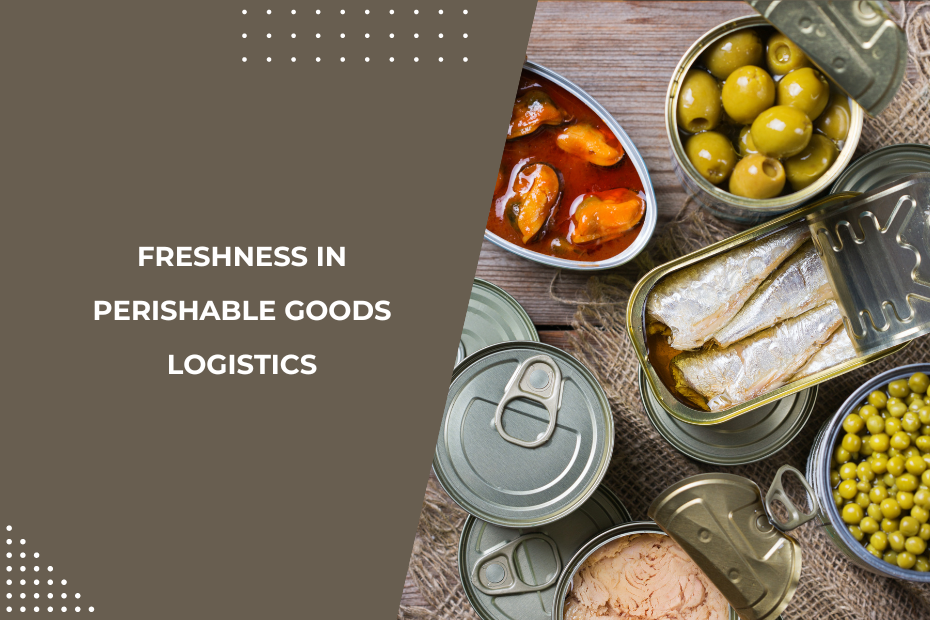When it comes to transporting perishable goods like fruits, vegetables, seafood, or pharmaceuticals, ensuring their freshness is critical for both customer satisfaction and reducing waste. From my experience in logistics management, I’ve found that maintaining the right conditions throughout the supply chain is essential to preserving product quality. Below, I’ll cover the best practices that help ensure freshness in perishable goods logistics and how you can implement them in your own operations.
1. Leverage Temperature-Controlled Environments
The most fundamental aspect of perishable goods logistics is maintaining the correct temperature from start to finish. Whether you’re transporting frozen seafood or fresh produce, a slight fluctuation in temperature can lead to spoilage, loss of freshness, and in some cases, product contamination.
Using refrigerated containers (reefer containers) ensures that goods remain at optimal temperatures during transit. For example, meats often need to be kept at sub-zero temperatures, while certain fruits require cool, but not freezing conditions. Moreover, active temperature-controlled packaging can help ensure that even when environmental conditions change, your goods stay fresh.
Actionable Tip: Equip your logistics fleet with reefer containers and use real-time monitoring systems to track temperatures throughout the journey. This will alert you to any temperature deviations that might compromise product quality.
2. Optimize Packaging for Perishable Goods
The way you package perishable goods plays a critical role in maintaining freshness. Different perishable items require specific packaging materials that cater to their unique needs. For instance, insulated containers and gel packs are widely used to maintain low temperatures for fresh items like dairy and seafood. For frozen goods, dry ice is often included in packaging to ensure items remain frozen for extended periods.
Additionally, ensuring the right ventilation in packaging is important for fresh produce. Certain fruits and vegetables, such as apples and bananas, release gases like ethylene, which can accelerate spoilage. Packaging designed to allow for adequate airflow will extend the shelf life of such items.
Actionable Tip: Use packaging materials specifically designed for the type of goods being transported. Incorporating insulation, breathable films, or vacuum-sealing methods can dramatically extend freshness.
3. Monitor Humidity Levels During Transit
Humidity control is as vital as temperature when it comes to ensuring freshness. Too much humidity can lead to mold and spoilage, while too little can cause goods to dehydrate, especially with fresh produce. Perishable goods like flowers, fruits, and vegetables are particularly sensitive to moisture levels.
One way to combat this is by using humidity-controlled containers that maintain the right balance of moisture inside. For highly sensitive items, adding moisture-absorbing materials can help stabilize humidity and prevent spoilage.
Actionable Tip: Implement moisture control measures within your containers, and monitor humidity levels using real-time tracking technology to ensure they stay within the desired range.
4. Implement Real-Time Monitoring Systems
Real-time monitoring has transformed perishable goods logistics by providing visibility into the condition of products at every stage of the supply chain. IoT sensors and smart trackers allow for continuous tracking of temperature, humidity, and even shock levels during transit. This gives you the ability to take corrective actions if something goes wrong, such as adjusting refrigeration settings or rerouting the shipment to avoid delays.
Using these technologies also helps in compliance with stringent regulations, such as food safety laws or pharmaceutical guidelines, ensuring that your goods arrive safely and in optimal condition.
Actionable Tip: Invest in smart tracking devices that offer real-time monitoring and automatic alerts if environmental conditions deviate from the set parameters. This will allow for immediate interventions, minimizing spoilage.
5. Minimize Handling and Reduce Transit Times
The more a shipment is handled, the higher the risk of spoilage due to changes in temperature, delays, or physical damage. One of the best ways to ensure freshness is to streamline your logistics process to minimize the number of handling points. This includes reducing the time goods spend in transit or sitting in warehouses.
By optimizing your supply chain routes and choosing the fastest and most reliable methods of transportation, you can ensure that your perishable goods spend less time in transit, reducing the chances of spoilage.
Actionable Tip: Use route optimization software to minimize transit time and handling. Direct shipping routes or fewer transfer points can lead to better outcomes in freshness and product quality.
What Are the Common Challenges in Perishable Goods Logistics?
- Temperature fluctuations during transit.
- Inadequate humidity control, leading to spoilage or dehydration.
- Delays in transportation, increasing the risk of product spoilage.
- Mishandling of goods during multiple points in the supply chain.
- Regulatory compliance issues, especially with food safety laws.
Key Takeaways for Fresh Perishable Goods Logistics
Ensuring the freshness of perishable goods during transportation requires a mix of proper temperature control, optimized packaging, and leveraging the latest monitoring technology. By adopting these practices, you can significantly reduce waste, maintain product quality, and improve overall customer satisfaction. From my experience, businesses that prioritize these tactics not only save on costs but also build stronger, more reliable supply chains that can better meet the demands of today’s market.

